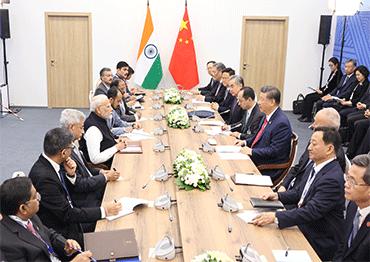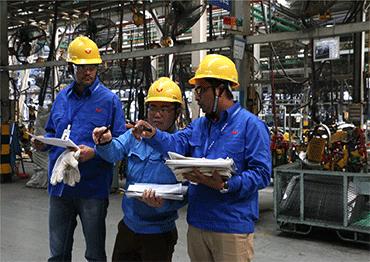From the 1960s onward, China-India relations entered a prolonged period of stagnation and regression. In October 1962, a large-scale armed conflict erupted along the border, plunging bilateral ties into a deep freeze. Hostility escalated, and diplomatic exchanges nearly ceased. Over the next decade, the lack of effective communication and sustained tensions in border areas kept relations at a low point. Both countries worked hard to ensure their respective security and development but struggled to achieve breakthroughs in their ties.
A turning point emerged in the mid-1970s. In 1976, the two nations resumed ambassadorial exchanges, marking the beginning of the normalization of bilateral relations. High-level visits soon became frequent, with leaders’ strategic dialogues charting a course for the future. Indian Prime Minister Rajiv Gandhi (1988) and President Ramaswamy Venkataraman (1992) visited China, while Chinese leader Li Peng reciprocated with visits to India while serving as premier (1991) and later as chairman of the National People’s Congress Standing Committee (2001). Through sustained diplomatic efforts, mutual understanding and trust grew, fostering cooperation across various fields. In June 2003, Indian Prime Minister Atal Bihari Vajpayee’s official visit to China culminated in the signing of the Declaration on Principles for Relations and Comprehensive Cooperation, injecting new momentum into bilateral ties. In April 2005, Chinese Premier Wen Jiabao’s visit to India led to a Joint Statement announcing a Strategic and Cooperative Partnership for Peace and Prosperity. During this phase, China-India relations made significant strides, with deepening economic and cultural cooperation and relative stability in border areas. By the turn of the century, relations had steadily improved, maintaining a stable development trajectory under the strategic guidance of both nations’ leaders.
In June 2020, the Galwan Valley clash erupted. The most severe military confrontation between the two sides in over four decades, it plunged relations into a sharp decline. The incident reignited border tensions and introduced diplomatic friction. During this period, China-India relations faced multiple challenges, with reduced consensus in multilateral forums and shifts in India’s international stance. Bilateral ties entered a complex phase of strategic recalibration.
Under the strategic guidance of the two countries’ leaders, China-India relations are currently on a trajectory of stable development. First, China-India boundary negotiations are continuously advancing. As of September 2024, the two sides had held 31 meetings of the Working Mechanism for Consultation and Coordination on Border Affairs, maintaining an overall peaceful and tranquil situation in border zones. Second, areas of China-India economic cooperation are constantly expanding. In 2024, bilateral trade volume between China and India reached US$118.3 billion, with China’s exports to India amounting to US$101.7 billion, accounting for 15.69 percent of India’s total imports, while China’s imports from India were US$16.6 billion, representing 3.2 percent of India’s total exports. Third, China and India maintain communication within various multilateral mechanisms, including the UN, the World Trade Organization, BRICS, the G20, the Shanghai Cooperation Organization and the China-Russia-India trilateral mechanism.
There is also room for cooperation in areas such as climate change, energy and food security, reform of international financial institutions and global governance.

 Old Version
Old Version


